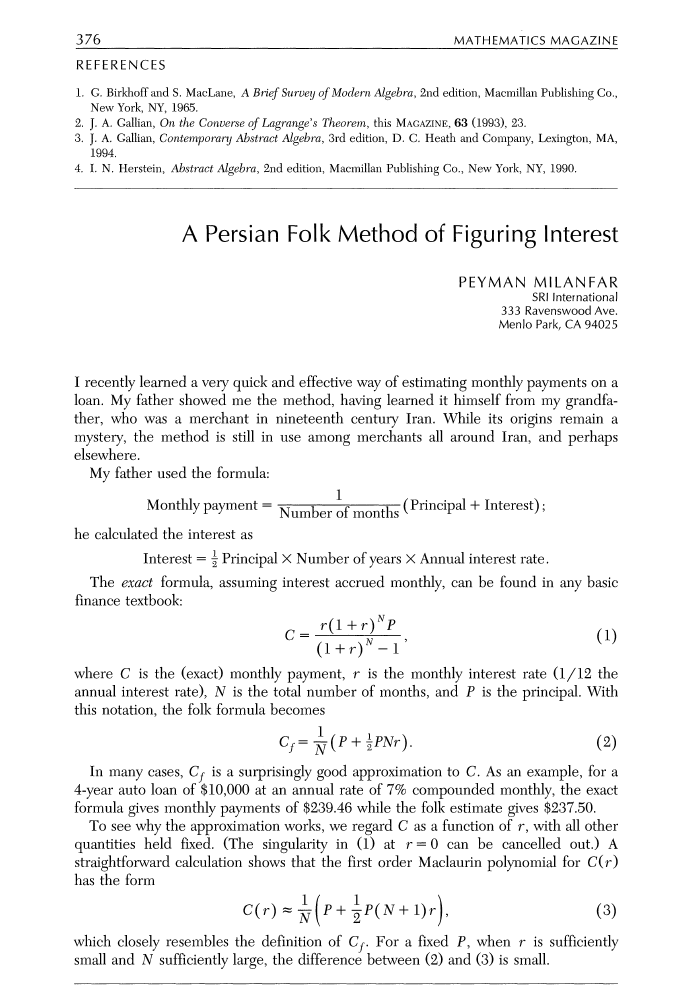Years ago when my wife and I we were planning to buy our home, my dad stunned me with how quickly he could compute loan payments in his head. I asked him how he did it. He& #39;d learned a strange formula for compound interest from his father, who was a merchant in 19th century Iran.
The origins of the formula my father knew is a mystery, but I do know it has been used in the bazaar& #39;s of Iran (and elsewhere) for as long as anyone can remember. It has an advantage: it& #39;s very easy to compute on an abacus. The exact compounding formula is much more complicated.
I found how the two formulae relate: the historical formula is basically a Taylor series of the exact formula around r=0. But the crazy thing is that the old formula goes back 100s (1000s?) of yrs before Taylor& #39;s, as does the abacus
#History">https://en.wikipedia.org/wiki/Taylor_series #History
https://en.wikipedia.org/wiki/Tayl... href=" #History">https://en.wikipedia.org/wiki/Abacus #History">https://en.wikipedia.org/wiki/Abac...
#History">https://en.wikipedia.org/wiki/Taylor_series #History
I published this in a 1-pager:
P. Milanfar, “A Persian Folk Method of Figuring Interest”, Mathematics Magazine, vol. 69, no. 5, December 1996
My late dad refused to be a co-author. But when it appeared, he printed it out and framed it; and hung it on the wall of the house. https://abs.twimg.com/emoji/v2/... draggable="false" alt="🙂" title="Slightly smiling face" aria-label="Emoji: Slightly smiling face">
https://abs.twimg.com/emoji/v2/... draggable="false" alt="🙂" title="Slightly smiling face" aria-label="Emoji: Slightly smiling face">
P. Milanfar, “A Persian Folk Method of Figuring Interest”, Mathematics Magazine, vol. 69, no. 5, December 1996
My late dad refused to be a co-author. But when it appeared, he printed it out and framed it; and hung it on the wall of the house.

 Read on Twitter
Read on Twitter


 " title="I published this in a 1-pager:P. Milanfar, “A Persian Folk Method of Figuring Interest”, Mathematics Magazine, vol. 69, no. 5, December 1996My late dad refused to be a co-author. But when it appeared, he printed it out and framed it; and hung it on the wall of the house. https://abs.twimg.com/emoji/v2/... draggable="false" alt="🙂" title="Slightly smiling face" aria-label="Emoji: Slightly smiling face">" class="img-responsive" style="max-width:100%;"/>
" title="I published this in a 1-pager:P. Milanfar, “A Persian Folk Method of Figuring Interest”, Mathematics Magazine, vol. 69, no. 5, December 1996My late dad refused to be a co-author. But when it appeared, he printed it out and framed it; and hung it on the wall of the house. https://abs.twimg.com/emoji/v2/... draggable="false" alt="🙂" title="Slightly smiling face" aria-label="Emoji: Slightly smiling face">" class="img-responsive" style="max-width:100%;"/>


